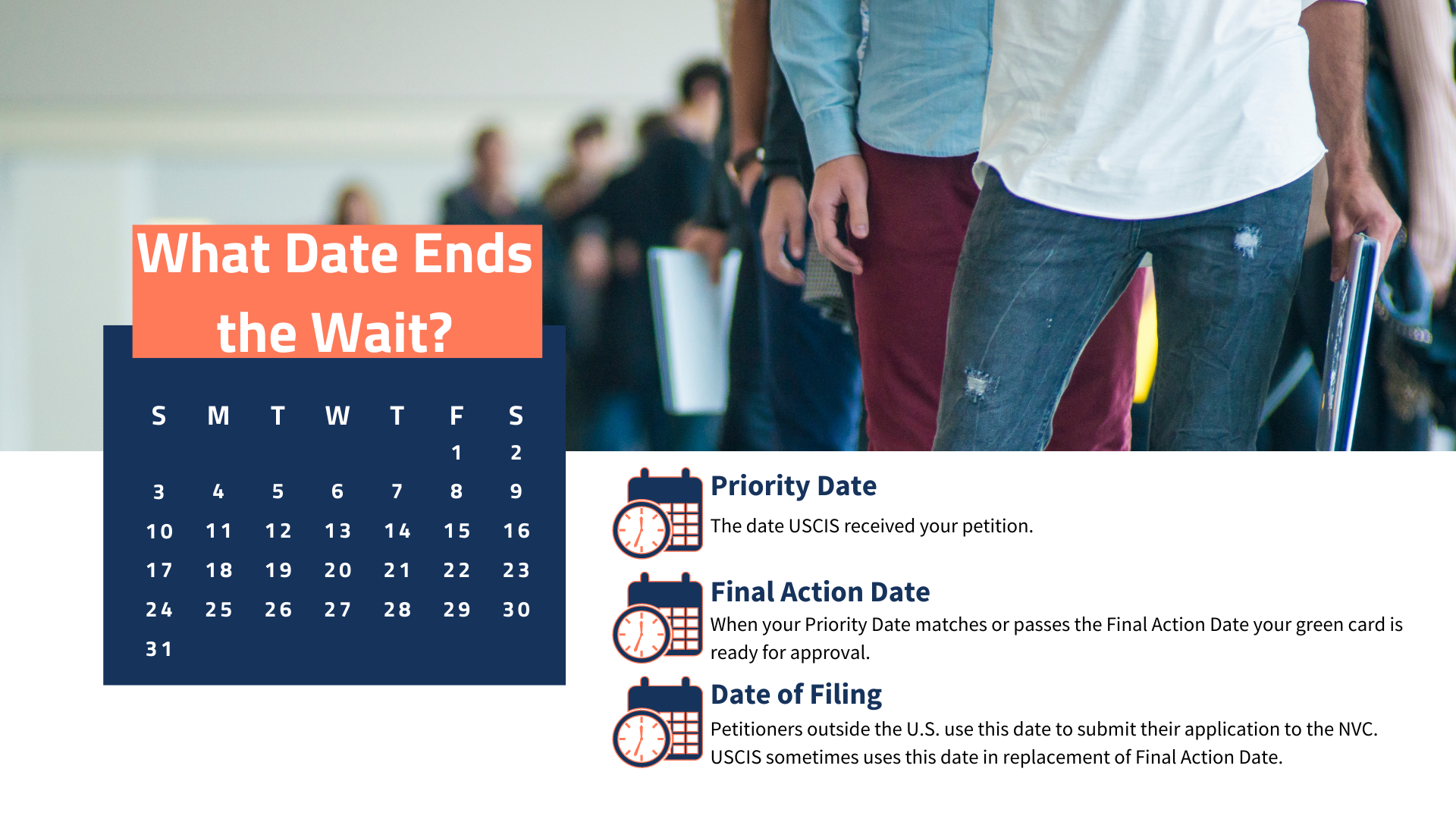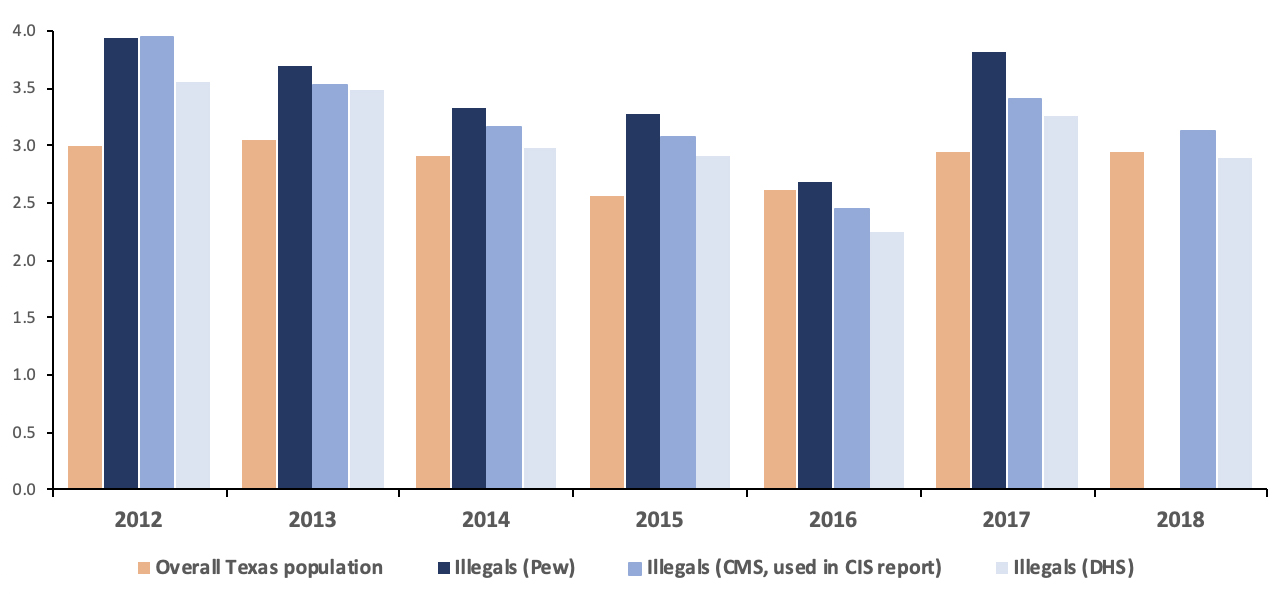June 2022 Visa Bulletin | Analysis and Prediction
One of the most significant parts of getting a green card in the U.S. is waiting for your priority date to be current. For those that have invested the time, effort, and money into an immigrant visa, questions arise such as “How long will it take for my date to be current?” and “Can I speed this process up?” We provide regular monthly updates on the most recent visa bulletin, analyze the date movements, and predict upcoming months to help answer these questions. This month, we’ll go over the June 2022 visa bulletin.
If you want more information on the background of the visa bulletin and how to read the bulletin, make sure to scroll to the bottom of the post or click the interested link in the Table of Contents.
June 2022 Visa Bulletin: Overview and Predictions
No change in the Family-Based Dates for Filing Chart. Mexico advances slightly in the Family-Based Final-Action Dates Chart. EB-2 India Advances One year in the Employment-Based Final Action Dates Chart.
USCIS has not yet specified which chart to use for AOS Filings in both the Employment and Family-Based categories. Check back for updates regarding that. We see minimal movement in both the employment and family-based charts. In the employment-based Final Action Dates Chart, the most notable change is EB-2 India advances on year. All countries in EB-1 are current under this chart. EB-2 China remains at March 1, 2019. In the employment Dates for Filing Chart, EB02 India remains at December 1, 2014 while China remains at April 1, 2019.
The Final Action Dates chart determines when an I-485 or IV can be approved, while the Dates for Filing Chart determines when an applicant can file an I-485.
Suppose you have an Adjustment of Status (AOS) application currently pending. In that case, to adjudicate your green card, your priority date must be current under the Final Action Chart. If you are contemplating interfiling—a process that allows AOS applicants to change their preference category—don’t hesitate to contact VisaNation Law Group.
Family-Based Green Cards
The category for family-based immigration comprises four preference levels based on who your sponsoring family member is in relation to you. There are five chargeability areas for this category: China, India, Mexico, the Philippines, and all other countries. Due to the global pandemic and limited appointments at overseas consular offices, family-based immigrant visas continue to see low usage numbers. Therefore, any unused family-based visas get added to the EB categories.
Family-Based Dates for Filing Charts
The Dates for Filing chart determines when an applicant can file an I-485. We see no change to the chart since the May Visa Bulletin was released. All countries in F-2A are current. In the F-1 category, mainland China, India and the rest of the world are at May 15, 2016. Mexico remains at May 1, 2001 and the Phillipines remains at April 22, 2015. In the F-2B category, mainland China remains a September 22, 2016 along with India and the rest of the world. Mexico stands at May 1, 2001 while the Philippines remains at October 1, 2013. In the F-3 category, China, India and the rest of the world remain at August 22, 2009 while Mexico is at March 1, 2001 and Philippines November 8, 2003.
For the purposes of the June 2022 bulletin AOS, USCIS has not yet indicated which chart to use yet. If a particular immigrant visa category is “current” on the Final Action Dates chart or the cutoff date on the Final Action Dates chart is later than the date on the Dates for Filing chart, applicants in that immigrant visa category may file using the Final Action Dates chart during that month.
*The numbers in the brackets designate the amount of movement in the date of filing for that particular category compared to the previous month. If there’s no bracket below certain dates, there is no movement for those dates/categories in the latest visa bulletin.
Family-Based Final Action Dates Chart
In the Final Action Dates Chart, we see no minimal change since the last Visa Bulletin. All countries in F-2A are current. In the F-1 category, China, India and the rest of the world remain at December 1, 2014 while Mexico advances one month to February 1, 2000 and Philippines remains at March 1, 2012. In the F-2B category, China, India and the rest of the world remain at September 22, 2015 while Mexico advances one month to February 1, 2001 and Philippines at October 22, 2011. In the F-3 category, China, India and the rest of the world remain at November 22, 2008 while Mexico is at September 15 ,1997 and Philipines at June 8, 2002. In the F-4 category, China and the rest of the world are at March 22, 2007 while India is at September 15, 2005 and Phillipines is at August 22, 2002. Mexico advances two months to March 1, 2000.
*The numbers in the brackets designate the amount of movement in the final action date for that particular category compared to the previous month. If there’s no bracket below certain dates, there is no movement for those dates/categories in the latest visa bulletin.
Remember, marriage-based green card applicants are known as immediate relatives and don’t have to wait to receive a green card.
Employment-Based Green Cards
With five different preference levels and seven chargeability areas, the employment-based category is issued through your job or occupation. The chargeability areas are China, India, Mexico, the Philippines, Central America (Guatemala, Honduras, El Salvador), Vietnam, and the general category.
Employment-Based Final Action Dates Chart
We see minimal movement in the Final Action Dates Chart in the employment-based category. All countries in EB-1 are current.
EB-2 India’s Final Action date advances one year to September 1, 2014, while EB-2 China sees no change (remains at March 1, 2019). We see no change to Mexico in the EB-4 category (remains at April 1, 2020). EB-3 India nad China see no change since the May Visa Bulletin. China remains at March 22, 2018 while India is at January 15, 2012. The remaining countries are current. All countires in EB-4 are current apart from Mexico and Central America (May 1, 2017). In EB-5 all countries are current apart from China which is at November 22, 2015.
USCIS has not specified which chart to use for AOS Filings. Check back for updates.
Employment-Based Dates for Filing Chart
Here are the June 2022 Visa Bulletin Final Action dates for employment-based immigrant visas. All countries in EB-1 are current. India and China EB-2 see no change since the last bulletin. China remains at April 1, 2019 and India remains at December 1, 2014. All other countries are current. EB-3 China remains at April 1, 2018 while India remains at January 22, 2012. All other countries are current. for EB-4 all countries are current apart from Central America which stays at June 15, 2017. EB-5 Unreserved is current for all countries except China (December 22, 2015).
|
EB-5 Unreserved (C5, T5, and all others) |
||||||
|
EB-5 Unreserved (I5 and R5) |
*The numbers in the brackets designate the amount of movement in the final action date for that particular category compared to the previous month. If there’s no bracket below certain dates, there is no movement for those dates/categories in the latest visa bulletin.
Important June 2022 Visa Bulletin Dates
For those that are new to the green card process, there are a few terms that you should learn and keep in mind to understand the rest of this June 2022 visa bulletin report. If you have further questions about the process or anything else about your green card, you should consult with your immigration attorney.
Priority Dates
The first term that you’ll hear thrown around is the priority date. Each person who files a petition with the USCIS receives a priority date when the government obtains your petition. A priority date establishes a person’s place in line to get an immigrant visa. Keep this date handy since you will need it to compare to the dates found in this bulletin. Remember that your priority date does not move, and you cannot change it except under certain circumstances.
Note: Priority dates are not relevant for immediate relatives of U.S. Citizens (e.g., spouses or minor children) as that category is always current.
Final Action Dates
Final action dates are based on the green card category and the chargeability area—your country of origin. Therefore, the final action dates constantly change based on how many people from each chargeability area have petitioned for that green card.
If green cards are still available, the final action date will likely move closer to your priority date. If green cards are not available, you will not see any movement from that final action date. However, if the limit has been passed, you may see the date retrogress or move backward away from your priority date.
Once the final action date in your green card preference level and chargeability area reaches your priority date, your priority date will be considered current. Once current, you will adjust your status or go through consular processing.
Date for Filing Charts and I-485
You’ll notice there are two charts for each category.
The Date for Filing chart determines whether or not one can submit the final immigrant visa application.
The Final Action Date chart indicates whether an immigrant visa number will be available.
If you need to file an adjustment of status, Form I-485, you need to follow the Final Action Date chart to know when to file is based on your priority date. However, sometimes USCIS will note that they’ll accept I-485s based on the Date for Filing chart. USCIS will use this chart when more immigrant visas are available than applicants.
USCIS announces which chart applicants can use within a week of the visa bulletin’s release.
Can You Shorten Your Waiting Time?
The short answer is: probably not. However, there are two prominent cases in which you may be able to shorten your green card processing time, which we will explain here.
The first way is to file an I-140 for a green card and chargeability area with a current priority date. In this case, rather than have to wait the usual six months for your petition to be processed, you can pay an additional fee for premium processing, which will shorten the processing time to 15 calendar days. However, this is only available for certain green cards that use the I-140. It is unavailable for family- or investment-based immigration and unavailable for the EB-1C or EB-2 NIW.
The second situation involves green card “porting,” or transferring your application from a lower preference level to a higher one to take advantage of the shorter waiting times. This is misleading because you don’t port your green card. In reality, you need to start over with a new petition (and a new PERM if necessary). The “porting” aspect only comes in when you indicate that you want to retain your original priority date.
As attractive as “porting” might seem, it is a delicate process with particular requirements. Therefore, it is always good to run decisions like these through your immigration attorney.
Staying Up-to-Date
In the world of immigration law, it always pays to be informed. The more you know about your green card, the easier it will be to make informed decisions about your case. To stay in the know about things like the newest visa bulletin, you can subscribe to the Department of State’s newsletter by emailing [email protected] with the message “Subscribe Visa Bulletin.”






